25 readers' designs for a new union jack
- Published

After our piece on possible alternatives to the union jack in the event of Scottish independence, many readers decided to design their own.
The previous Magazine article showcased designs that flag experts and enthusiasts, known as vexillologists, came up with. Here are 25 readers' designs in response.
We were deluged by flags which kept the shapes in the current union jack but changed the colours. Some readers gave a political commentary on the difficult nature of a union.
Kaveh Ossia's flag (at the top) was a nod to multiculturalism. "The different colours indicate the many possibilities and beauties this country has to offer, multi-culturality and diversity in the country," Ossia says.
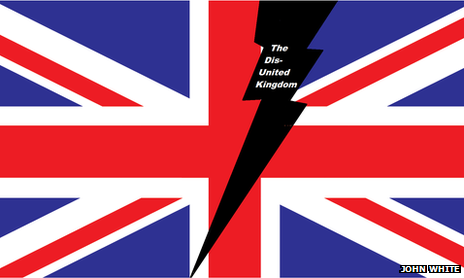
John White on the other hand preferred a visual representation of the potentially painful process of separation. "Lets just be honest," he says.
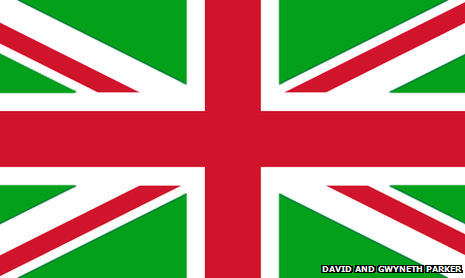
Dave Parker, of Cheltenham, was interested in the idea of a flag that would be the easiest to introduce. "The simplest change would be to swap the blue for green. Easy to update existing computer imagery and the green would act as inclusion of the Welsh flag - it doesn't need to be literal. This took 10 seconds in Photoshop."
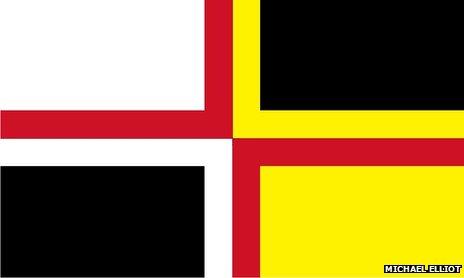
Michael Elliot, from Edinburgh, went for a completely new pattern and something that recognised Cornwall as a nation."My design for a new post-independent Scotland union flag is made up of quarters of the flags of (in clockwise order from top left) England, St David (for Wales), Ulster and Cornwall. Each has an equal share of the flag, reflecting that each constituent nation are equal partners in the Union."
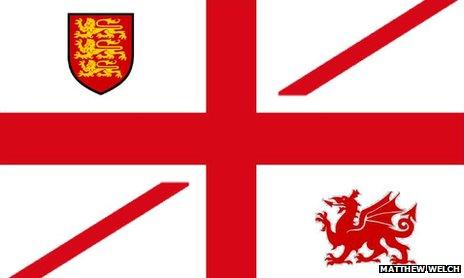
Matthew Welch, from Shropshire, designed his flag on the day the SNP gained power in Scotland. "As I'm sure you can see it includes the three remaining segments of the United Kingdom and recognises the the Royal family which binds us together by placing the three lions of the royal household in the top right corner."
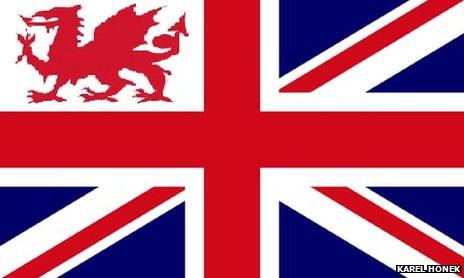
Unlike many submitters, Karel Horinek had no truck with taking the blue out of the flag. "My design is commenting on the change. I changed only one corner because psychologically you have to keep traditions.
"People accept small changes, but not radical ones. The left upper corner symbolises giving space for change. The right corner symbolises urgency.
"To have change in the middle of a flag symbolises power and arrogance. The colours have to stay the same!
"People are used to the old flag and the colours are symbolical for the country."
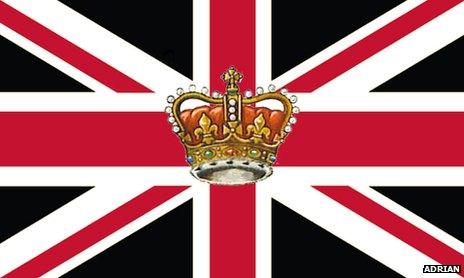
Some would-be flag designers wanted more emphasis on royal symbolism. "Keeping it short and simple," says Adrian.

Elmar Janahmadov favoured the return of some very old themes. "After Scotland declares its independence the Union Jack should not be used at all and the Anglo-Saxon flag should be restored to its previous glory. The dragon used to be the symbol of the Anglo-Saxon kingdom of Wessex, which covered most of England and part of Wales at its peak. It is also the present symbol of Wales. The colour red is common for all three historical parts England, Wales and Northern Ireland."
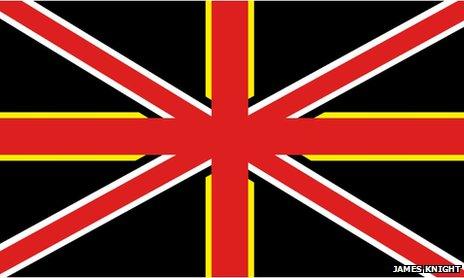
James Knight was one of many readers to pick up the theme of using the yellow and black flag of St David rather than the Welsh national flag. "My interpretation of a revised union flag incorporates the St David's flag of Wales, St George's flag of England and St Patrick's flag of Ireland."
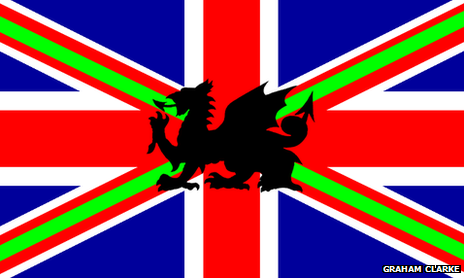
"This re-design of the union jack was done by my son, Rhys Clarke, some years ago - when he was only about 13, in fact. Obviously, I'm biased but I think it has an elegance and succinctness that a lot of the other proposed designs lack," says Graham Clarke.
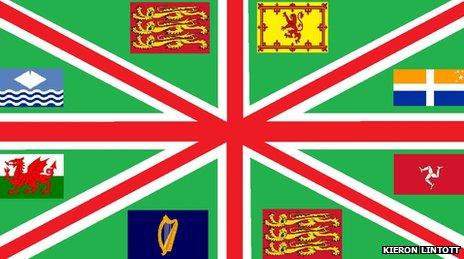
Kieron Lintott, on the other hand, went for detail. "The green represents the three countries in the UK (not including Scotland as it might get independence). There are the four parts of the British Royal Family coat of arms - the royal family has Scottish roots so the coat of arms wouldn't change whether Scotland is independent or not. Then there's Wales, the Isle of Man, Isle of Wight and the Scilly Isles (off Penzance). It also incorporates Northern Ireland (diagonal cross and harp) and England's cross is included (as well as the red and gold/yellow lions). It may look basic but it's inspired by the current union jack, coat of arms and other flags of the UK."

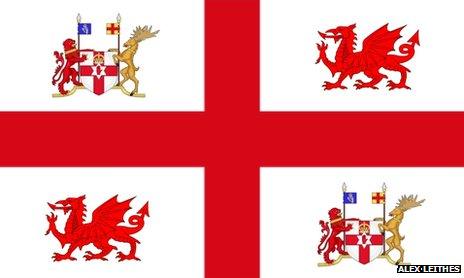
Alex Leithes submitted two designs. He says they are both "pretty simple".
Lots of readers left no explanation and let the flags speak for themselves.
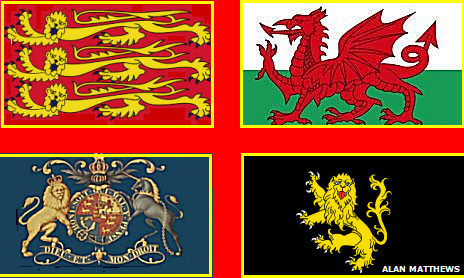
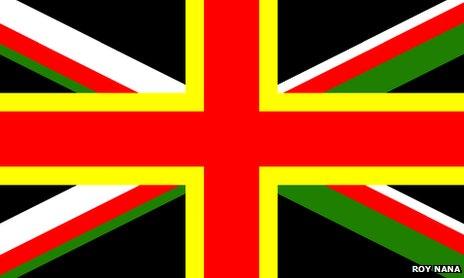
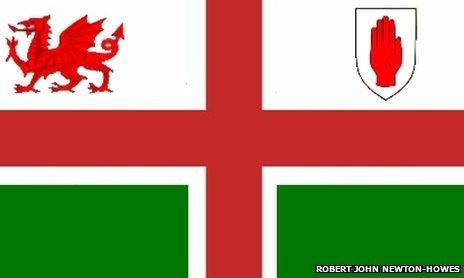
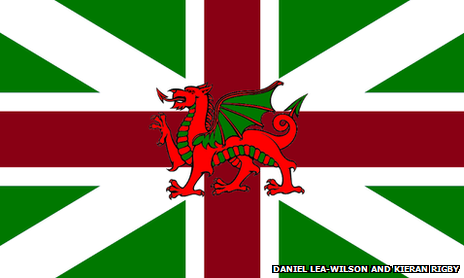
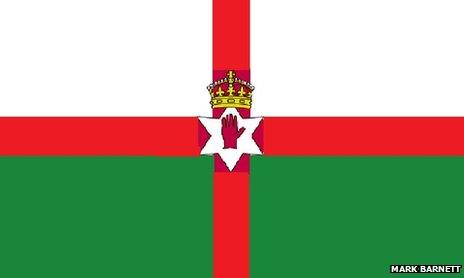
Other contributors were bedevilled by their limitations in draughtsmanship.

"My union flag concept is a black background, the St David's Cross for Wales, the crossed red lines of St George. A circle in the middle of the flag split into thirds displaying the two crosses and the dragon flag of Wales. Could also be the royal emblems but I couldn't draw them," says Michael Holmes.
Others preferred a more humorous approach to composition.
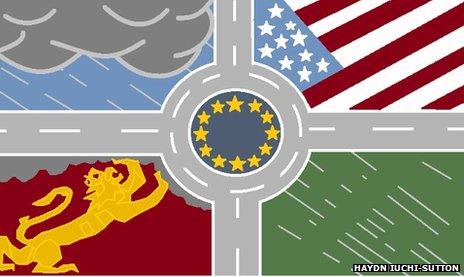
"I think that the attached flag captures the essence of the modern UK," says Haydn Iuchi-Sutton, of Suffolk
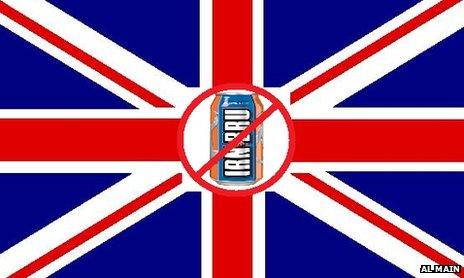
"The solution is simple," says Al Main of his post-Scottish independence flag.
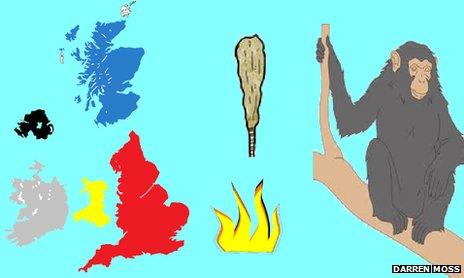
Darren Moss's flag contained a visual joke that most laymen would struggle to decipher at first glance. "Inspired by the general trend of devolution," he says.

Kris Taylor, aged 32 ½, appears to have been inspired by the spirit of Jackson Pollock in his composition entitled My New Flag.
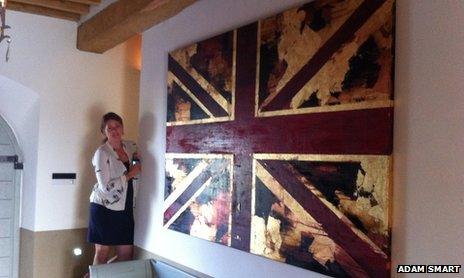
The union jack has been the inspiration for a multitude of artistic interpretations. "This was painted by my partner, Chelsea Davine," says Adam Smart.
You can follow the Magazine on Twitter, external and on Facebook, external